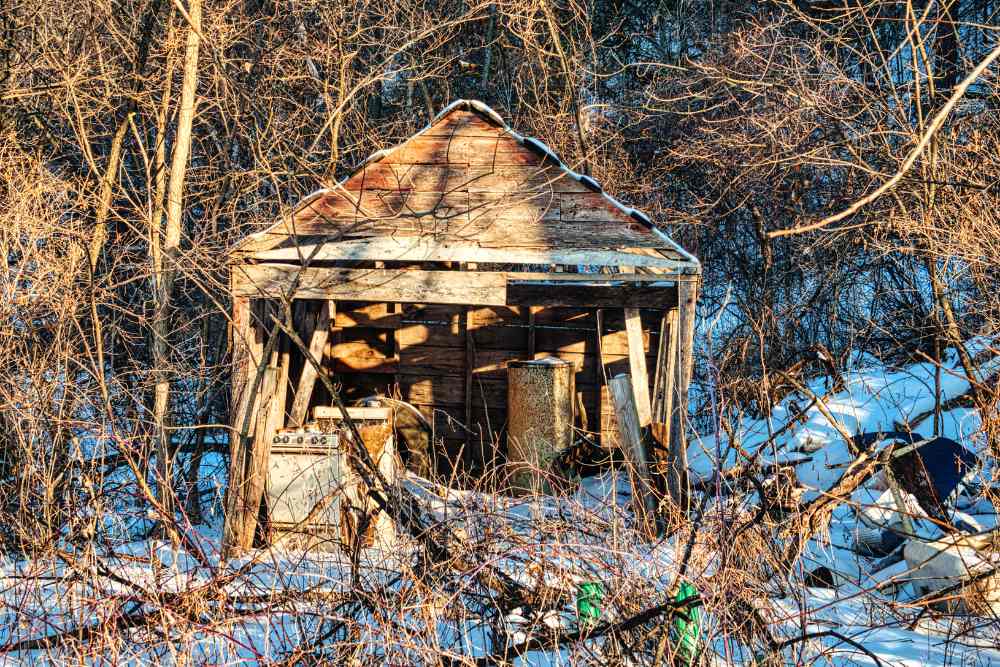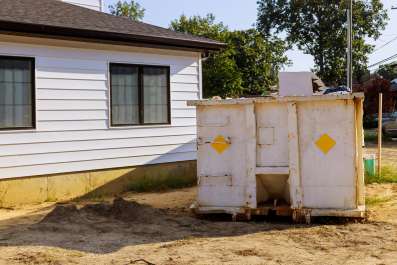
Demolition Cleanup vs. Junk Removal What’s the Difference
September 1, 2025
How Deck Removal Can Enhance Your Outdoor Living Area
September 1, 2025Essential Tools for Shed Demolition and Cleanup
Before any hammer swings or boards come crashing down, equipping yourself with proper safety gear is essential. Durable gloves shield your hands from splinters and sharp edges, while safety goggles prevent dust and debris from causing eye injuries. Heavy-duty boots with steel toes keep your feet protected from falling objects. A hard hat is not just a suggestion; it is a necessity when dismantling roofs or removing walls. Respirators or dust masks are important, especially when handling old materials that could contain harmful particles. Each piece of safety equipment serves a specific role, creating a protective barrier against the unpredictable hazards of demolition work.
Safety is about more than just wearing the gear. Understanding how to move safely around a demolition site is equally crucial. Keep pathways clear to avoid trips and falls, and always maintain awareness of your surroundings. Secure loose boards and unstable structures before attempting removal. Proper attire and caution can significantly reduce accidents, allowing the process to move smoothly and efficiently while minimizing the risk of injuries that can interrupt the project or cause lasting harm.
Essential Hand Tools for Efficient Tear-Down
Hand tools are the backbone of shed demolition. A sturdy crowbar allows you to pry boards and panels apart with precision, reducing the likelihood of unnecessary damage. Hammers, both claw and sledge, are indispensable for dismantling nails, breaking apart wooden structures, and handling stubborn materials. Screwdrivers, both flathead and Phillips, help remove screws that may hold the shed together. A handsaw can be used for controlled cutting in tight spaces, giving you leverage over larger power tools in confined areas. Each tool brings a unique function that contributes to a controlled, methodical demolition process.
Efficiency is enhanced when tools are organized and within reach. A tool belt or box keeps frequently used items handy, reducing downtime searching for the right implement. Knowing the strengths and limitations of each hand tool allows you to approach each section of the shed strategically, conserving energy while ensuring a thorough tear-down. The combination of quality tools and methodical use makes the demolition safer, faster, and more manageable, preventing frustration that comes from struggling with inadequate equipment.
Power Tools That Speed Up Shed Demolition
Power tools bring speed and muscle to shed removal. Circular saws can slice through thick boards and panels in seconds, while reciprocating saws excel at cutting nails, pipes, and metal brackets. Electric drills not only assist in removing screws quickly but can also be used with attachments for disassembly of complex fixtures. Nail guns, though primarily for construction, can sometimes help in reversing certain attachments or dismantling sections efficiently. The key is to match the tool to the material, ensuring that energy is focused and controlled for maximum impact without compromising safety.
Skillful use of power tools reduces the manual strain that hand tools can impose. Understanding the capabilities of each machine, coupled with proper maintenance and inspection before use, prevents accidents and tool failure. Work slowly in confined areas and always use a steady, controlled motion. Combining power and precision keeps the demolition process moving at a steady pace while minimizing unnecessary damage and ensuring debris remains manageable for cleanup.

Planning for Debris Management
Once the shed starts coming apart, debris management becomes a primary concern. Preparing heavy-duty trash bags or tarps to collect loose materials prevents clutter and hazards from building up around the worksite. Assign specific areas for wood, metal, and other materials to streamline disposal or recycling later. Wheelbarrows or carts are invaluable for moving heavy sections efficiently without straining your back. A clean workspace not only enhances safety but also improves morale, making the demolition less overwhelming and more structured.
Managing debris isn’t just about collecting waste; it’s about minimizing environmental impact. Consider sorting materials that can be reused, recycled, or donated, and separate hazardous items for proper disposal. Regularly clear pathways to prevent accidents and maintain access to all areas of the shed. A thoughtful approach to debris ensures the demolition site remains organized, and it reduces the post-demolition workload, allowing cleanup to proceed quickly once dismantling is complete.
Using Ladders and Supports Safely
Demolishing taller sheds or roof sections often requires climbing and reaching areas safely. Ladders, scaffolds, or step stools should be inspected for stability before use, and always placed on firm, level ground. When working on elevated surfaces, ensure someone is nearby for assistance, and avoid overreaching, which can lead to dangerous falls. Proper support under weak structures prevents unexpected collapses, keeping both you and the shed under controlled conditions during disassembly.
Safety on ladders extends beyond placement. Wear non-slip shoes and maintain three points of contact at all times. Secure loose clothing and avoid carrying heavy tools while climbing. By combining secure support systems with careful movements, you can access every part of the shed without putting yourself at unnecessary risk. This approach minimizes accidents and keeps demolition progressing steadily while safeguarding your team and property.
Preparing the Shed for Safe Disassembly
Preparation is often overlooked but is crucial for a smooth demolition. Begin by removing any items stored inside the shed and disconnecting utilities if present. Mark areas of concern, such as rotted wood or unstable walls, to approach them with caution. Plan the order of disassembly, often starting with the roof, followed by walls, and ending with the floor. Understanding the shed’s construction helps predict where support is necessary and where controlled collapses can occur safely.
Preparation reduces surprises that can slow down demolition. Take the time to inspect nails, screws, and other fasteners to avoid injuries while removing them. Remove any landscaping around the shed that might obstruct movement or become a hazard when debris falls. By planning carefully and assessing potential risks beforehand, you create a safer, more efficient demolition environment that minimizes accidents and streamlines cleanup.
Selecting Proper Containers for Waste Disposal
Choosing the right containers for waste disposal keeps the demolition site organized. Heavy-duty trash bins, dumpsters, or portable containers provide structured spaces for different types of debris. Clearly labeling each container ensures materials are sorted for disposal, recycling, or repurposing. This separation reduces contamination and simplifies transportation when the demolition is complete. Adequate containers prevent spillage, making post-demolition cleanup less labor-intensive and more orderly.
Proper container selection contributes to both safety and efficiency. Using containers that match the volume and type of debris prevents overloading, which can lead to injuries or equipment damage. Place containers strategically around the shed to reduce carrying distances and minimize repetitive strain. Thoughtful planning in disposal not only protects workers but also ensures that the cleanup process proceeds quickly, leaving the area ready for new projects or landscaping.
Handling Hazardous Materials Responsibly
Old sheds can contain hazardous materials, from lead-based paints to rusted nails and chemicals. Identify and separate these items to prevent exposure or contamination. Use gloves and protective clothing when handling potentially dangerous materials, and store them in clearly marked, secure containers. Follow local guidelines for disposal of hazardous waste to ensure compliance with environmental and safety regulations. Awareness of potential hazards reduces the risk of injury and legal complications during cleanup.
Education is a critical component of safe handling. Learn which materials are considered hazardous and how to manage them properly. Avoid improvising with unsafe tools or storage methods. Taking these precautions protects both you and the environment, while promoting a responsible approach to shed demolition. Handling hazardous materials correctly ensures the site remains safe and that cleanup can proceed without interruptions or added risk.
Organizing the Cleanup Process
An organized cleanup process reduces fatigue and improves efficiency. Designate zones for debris, tools, and salvaged materials to keep pathways clear. Schedule periodic breaks to maintain energy and focus, and rotate tasks among team members to prevent overexertion. Document progress if necessary to monitor completed areas and plan the next steps systematically. Organization transforms what could be chaotic into a manageable and controlled process, allowing work to proceed smoothly from start to finish.
Organization also extends to post-demolition tasks. Plan the sequence of debris removal, from larger items to smaller fragments, ensuring heavy loads are transported safely. Keep cleanup tools and containers accessible, and dispose of waste according to local guidelines. Maintaining order throughout the project minimizes stress, prevents accidents, and ensures that the shed demolition concludes efficiently with the area left safe and ready for future use.
Maintaining Tools for Longevity and Safety
Tools are investments, and maintaining them prolongs both their life and your safety. Clean tools after use, inspect them for damage, and perform regular maintenance such as sharpening blades or tightening handles. Store them in a dry, secure location to prevent rust and degradation. Using well-maintained tools reduces accidents, improves precision, and ensures each task is executed effectively without unnecessary effort or delays caused by faulty equipment.
Routine maintenance also includes checking power tools for electrical safety and ensuring batteries are charged and functional. Establish a habit of returning tools to designated storage spaces after use to prevent misplacement. Prioritizing tool care not only enhances safety but also contributes to smoother, faster, and more reliable demolition work. Well-maintained tools are fundamental to executing shed teardown projects efficiently and safely.
Conclusion
Shed demolition and cleanup demand careful planning, the right tools, and consistent attention to safety and organization. Each phase, from preparing the site to handling hazardous materials, relies on having the appropriate equipment and approach. Safety gear protects workers, hand and power tools make tasks manageable, and proper debris management ensures the worksite remains organized. Thoughtful planning and organized processes reduce accidents, improve efficiency, and create a smoother experience overall. Every step contributes to a controlled, methodical, and safe demolition environment that can handle both small and large shed removal projects effectively.
For residents and businesses seeking reliable assistance with junk removal in Santa Rosa, CA, North Bay Junk Removal offers professional services tailored to handle even the most challenging debris. With a skilled team equipped to manage every stage of the demolition process, they provide fast, safe, and environmentally responsible solutions. Contact North Bay Junk Removal at 707-478-6817 to schedule service and regain your space quickly and efficiently, ensuring your property is left clean and ready for its next use.



